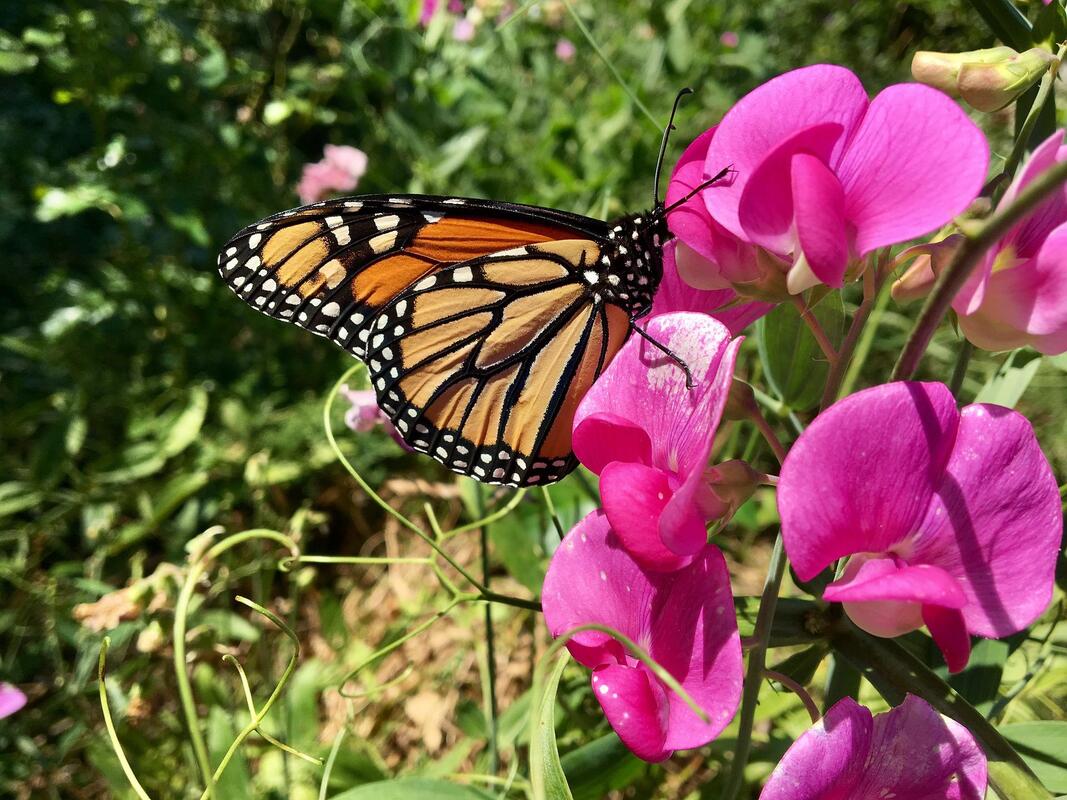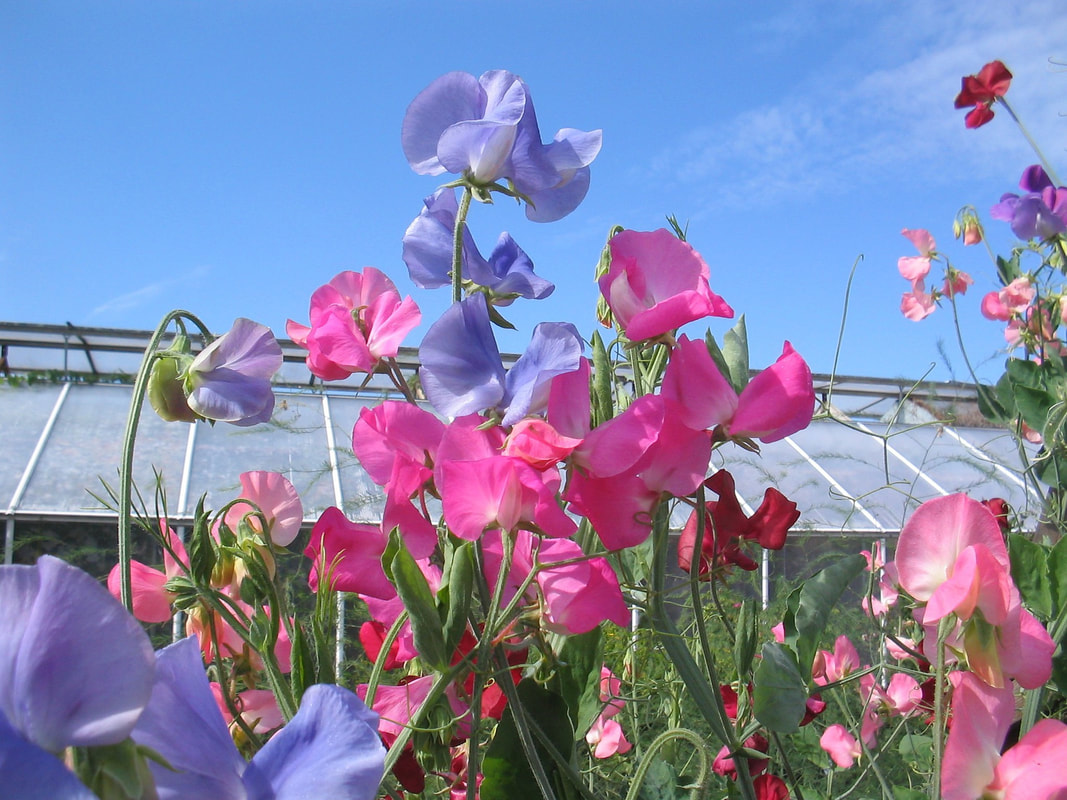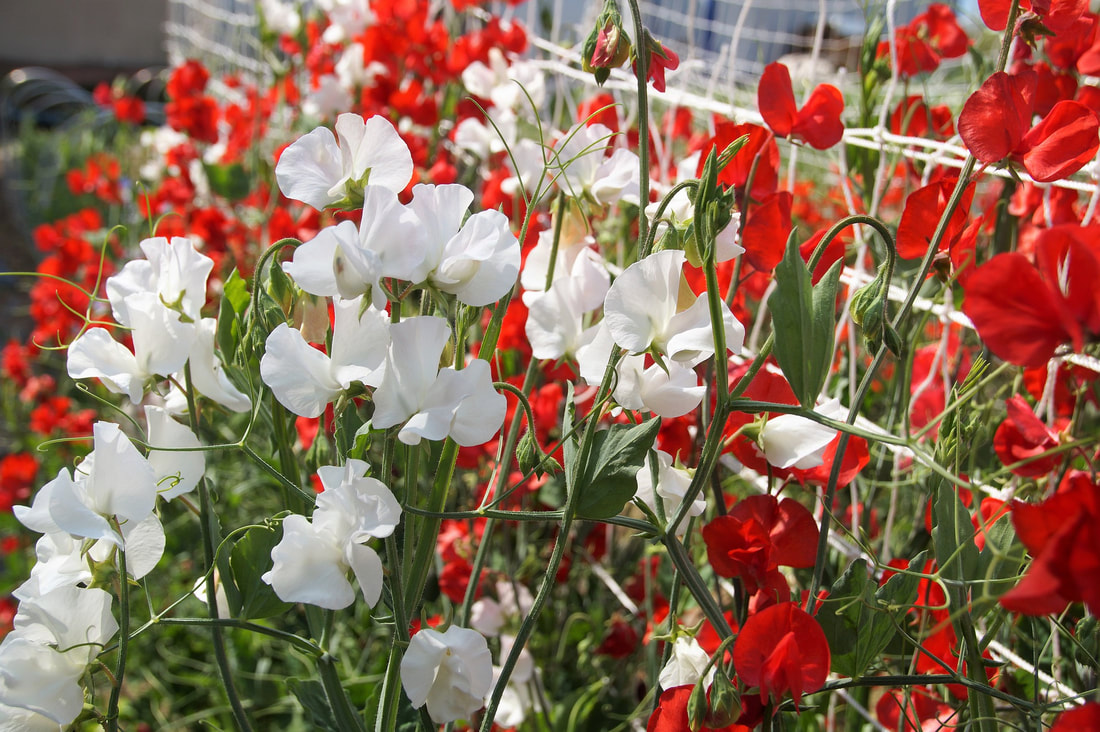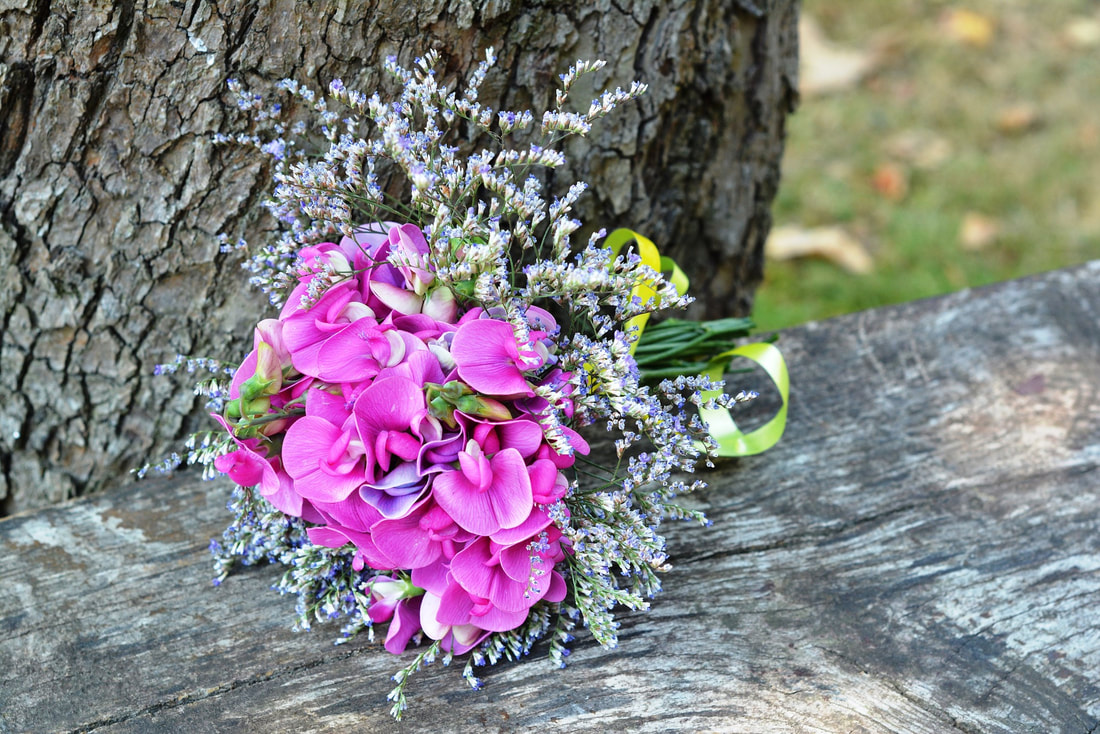How to Grow and Care for Sweet Peas
Sweet peas (Lathyrus odoratus) resemble garden peas, but are grown for their colorful blooms and sweet fragrance. This old fashioned flower is ideal for brightening corners of the yard or for creating a quiet area for rest and relaxation.
According to Irish legend, sowing sweet pea seeds before sunrise on St Patrick's Day will produce bigger, more colorful, and more fragrant blooms. It may be a bit early to plant them here in Maine, but give it a try if you can and you may be rewarded with an abundance of sweet pea blooms.
According to Irish legend, sowing sweet pea seeds before sunrise on St Patrick's Day will produce bigger, more colorful, and more fragrant blooms. It may be a bit early to plant them here in Maine, but give it a try if you can and you may be rewarded with an abundance of sweet pea blooms.
Choosing and Buying Sweet Pea Seeds
Long Day, Short Day, and Day Neutral Sweet Peas
Many sweet peas are photoperiodic and bloom in response the day length. Long day sweet peas bloom when the the day is longer than the night. Short day sweet peas bloom when the nights are longer than the day. Day neuteral sweet peas bloom regardless of the length of day and night.
Long day sweet peas bloom in the spring and summer and are suitable for spring planting in northern climates like Maine.
Short day sweet peas are planted in late summer or early fall and bloom in the fall or winter. Short day sweet peas are suitable for southern regions with mild winters.
Day neutral sweet peas can be grown in the spring in northern regions (like Maine) or grown in the fall and winter in southern regions with mild climates.
Unless the seed packet states otherwise, it is safe to assume the seeds are day neutral sweet peas, but it is advisable to check the description carefully to ensure you are buying the right sweet peas for your garden.
Many sweet peas are photoperiodic and bloom in response the day length. Long day sweet peas bloom when the the day is longer than the night. Short day sweet peas bloom when the nights are longer than the day. Day neuteral sweet peas bloom regardless of the length of day and night.
Long day sweet peas bloom in the spring and summer and are suitable for spring planting in northern climates like Maine.
Short day sweet peas are planted in late summer or early fall and bloom in the fall or winter. Short day sweet peas are suitable for southern regions with mild winters.
Day neutral sweet peas can be grown in the spring in northern regions (like Maine) or grown in the fall and winter in southern regions with mild climates.
Unless the seed packet states otherwise, it is safe to assume the seeds are day neutral sweet peas, but it is advisable to check the description carefully to ensure you are buying the right sweet peas for your garden.
How many varieties of sweet peas are there?
There are hundreds of varieties of sweet peas that range in flower color, plant height, size of the blooms, and intensity of fragrance. It is necessary to read the plant descirption carefully to determine the chracteristics of the sweet pea.
What color are sweet peas?
Sweet peas range in color from white and pastel pinks and lavender to deep shades of red, purple, and indigo with many bicolors available, too. The only color missing in the sweet pea's pallet is true yellow.
Are all sweet peas fragrant?
The sweet pea's name (Lathyrus odoratus) comes from the Greek words 'la' meaning very and 'thyros' meaning paasionate. 'Ordoratus' comes from the Latin meaning fragrant. All sweet peas produce fragrance, but the intensity of the frgrance varies.
Old-Fashioned varieties of sweet peas are typically more fragrant that newer hybrid varieties because most sweet peas have been bred to produce showier blooms at the expense of fragrance. As a rule, sweet peas with smaller blooms are more fragrant that those with large, showy blooms.
Seed packets typically reference the intensity of fragrance to expect from that variety.
Old-Fashioned varieties of sweet peas are typically more fragrant that newer hybrid varieties because most sweet peas have been bred to produce showier blooms at the expense of fragrance. As a rule, sweet peas with smaller blooms are more fragrant that those with large, showy blooms.
Seed packets typically reference the intensity of fragrance to expect from that variety.
Where should you plant sweet peas?
Sweet Peas prefer full sun, with cool growing conditions. A location that provides shelter during the hottest part of the day and direct sun in early morning and late afternoon is ideal. Otherwise, mulch the plants to keep the soil moist and roots cool.
Sweet peas also need support for the growing vines. Plant them along fences or in front of a trellis.
Sweet peas also need support for the growing vines. Plant them along fences or in front of a trellis.
What kind of soil do sweet peas need?
Sweet peas prefer humus-rich, moist soil, but will suffer in soggy soil. Amend the soil with generous amounts of organic matter, such as compost or aged manure, before planting your sweet pea seeds.
Do you need to soak sweet pea seeds before planting them?
Sweet pea seeds germinate quicker if you soak them in water before planting them, but they will germinate on their own. Soak sweet pea seeds in lukewarm water for several hours before planting. This causes the seed to swell, preparing it for quicker germination.
How do you plant sweet peas?
Plant sweet peas in early spring as soon as the soil has dried. Sow seeds to a depth of ½ to 1 inch spaced four inches apart in rows. If you are growing tall sweet peas, erect your fence or trellis first and plant the seeds two inches from the trellis.
How much water do sweet peas need?
Sweet peas prefer moist soil and benefit from an inch of rain a week. Water to keep the soil moist until seedlings emerge in 7 to 10 days. Reduce watering to once or twice a week, depending on the weather and soil conditions, or whenever the soil feels dry to the touch 1 inch below the surface.
Do you need to mulch sweet peas?
Sweet peas benefit from mulching. Mulch sweet peas with grass clippings or other organic mulch to maintain moisture and keep the soil cool. Mulch also creates and effective weed barrier if applied to a depth of 2 to 3 inches.
Do you need to deadhead sweet peas?
Deadheading your sweet peas will trick the plant into thinking it has not produced enough seed to reproduce. It will react by producing more blooms. Deadhead spent sweet pea blooms as soon as they begin to fade to keep your sweet peas blooming for an extended period.
Sweet peas make delightful floral bouquets or cut flowers to fragrance the home. Consider a small vase in the bedroom to promote relaxation or set the mood for romance, or display them in the kitchen and bathroom to spread summer cheer.



